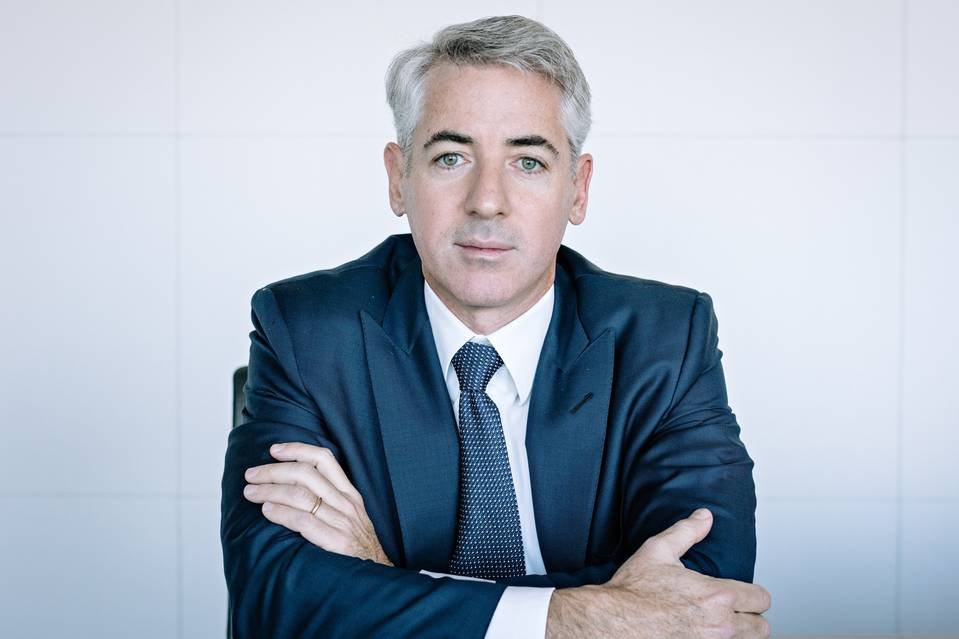Billionaire hedge fund manager Bill Ackman has offered his blunt view on the U.S. stock market — and it came in just one word: “Bullish.”
Ackman, who is worth $8.2 billion and ranks #413 on Bloomberg’s Billionaires Index, shared his thoughts after financial data provider Barchart posted a chart on X (formerly Twitter) showing first-quarter data on the trillions of dollars still sitting in money market funds. He reposted it and offered a single-word takeaway.
Ackman’s hedge fund, Pershing Square, manages $18 billion, and his experience spans over 30 years of market cycles. As the founder of Gotham Partners in 1992, he has “been-there, done-that” — from the Internet bubble to the Great Recession to the COVID-19 crash and beyond.
Stocks Surge After Trump Halts Tariffs
Stocks have staged an impressive rally since April 9, when President Donald Trump paused most of the reciprocal tariffs he had announced only a week earlier, on April 2 — a day being dubbed “Liberation Day.”
The article notes, “The higher-than-hoped tariffs had sent stocks reeling as investors scurried to reset economic models and cut earnings outlooks.” But the pause on tariffs “provided the perfect match to light what had become a deeply oversold stock market,” triggering a rally so strong that the S&P 500 has risen about 25% in the matter of only three months.

Rally Defies Weak Economic Signals
What’s catching everyone off guard is that the rally has come despite clear signs that the U.S. economy is weakening.
“Unemployment has increased over the past year, and sticky inflation will likely worsen as the impact of remaining tariffs is felt.”
That’s not the kind of economic environment that usually fuels a bull market. Stocks typically do well when the economy is strong and spending by households and businesses is robust — neither of which appears to be true right now.
Bulls vs. Bears: What’s Next?
Now that stocks have recovered nearly all of their bear market losses from earlier in the year, the debate turns to what comes next.
“Bulls argue that the damage done during the 19% decline in the S&P 500 between February and April’s low priced in the risks, clearing the way for durable gains that support buying dips. Bears point to arguably rich valuations and a sputtering economy.”
Ackman has clearly taken a side with his one-word post, and many investors are watching closely.
Fed in Holding Pattern as Inflation Lingers
Inflation is down from its 2022 highs, but it hasn’t gone away — and neither has the Federal Reserve’s caution.
“The Fed raised interest rates by 5% in 2022 and 2023 to lower inflation, a strategy that worked, given CPI inflation has retreated from 8% to below 3%.”
But now the Fed has gone into wait-and-see mode:
“Inflation has since leveled off, and new concerns over the impact of tariffs on inflation have shifted the Fed to the sidelines, putting it firmly in wait-and-see mode.”
President Trump has criticized Fed Chair Jerome Powell, calling him “Mr. Too-Late” and a “numbskull” for not cutting rates fast enough.
“The Fed’s hesitation on monetary policy is concerning, though, given that the Fed and the World Bank estimate that the U.S. GDP is falling to 1.4% this year from 2.8% last year.”
Also Read: AI Is Driving Up Your Electricity Bill—Here’s Why Some States Are Seeing 20% Price Hikes
Tariffs and Debt Add to Economic Uncertainty
As if inflation and Fed inaction weren’t enough, there’s also the country’s growing debt and deficit:
“America’s deficit exceeds $1.8 trillion, accounting for 6.4% of gross domestic product. Overall, total public debt outstanding is roughly 122% of GDP, far north of the 75% level seen in 2008 during the Great Recession.”
The backdrop isn’t exactly promising for future earnings growth — and that’s a problem because stocks typically follow earnings over time.
$7.4 Trillion on the Sidelines
Despite all these risks, investors haven’t fully jumped back in. There’s still $7.4 trillion parked in money market funds, according to the Federal Reserve Bank of St. Louis. That’s up from $6.44 trillion a year earlier.
“The Investment Company Institute says $7.07 trillion remained in money market funds as of July 10, up from $7.02 trillion on June 25.”
That cash could act as dry powder if investor confidence returns.
“Many investors sold stocks this spring amid soaring tariff-driven volatility, opting for the relative safety of money market accounts yielding 4% or more. That move looked really smart in early April, but it doesn’t look nearly as wise now, given the S&P 500’s move.”
Ackman’s one-word reply — “Bullish” — implies he believes some of that money could start flowing back into the market.
Final Word
Bill Ackman’s post isn’t a deep analysis, but it doesn’t have to be. In markets, sometimes brevity signals conviction. With stocks rallying hard even as economic risks grow, Ackman’s confident tone may encourage other investors to rethink their position — especially those still sitting on the sidelines.



